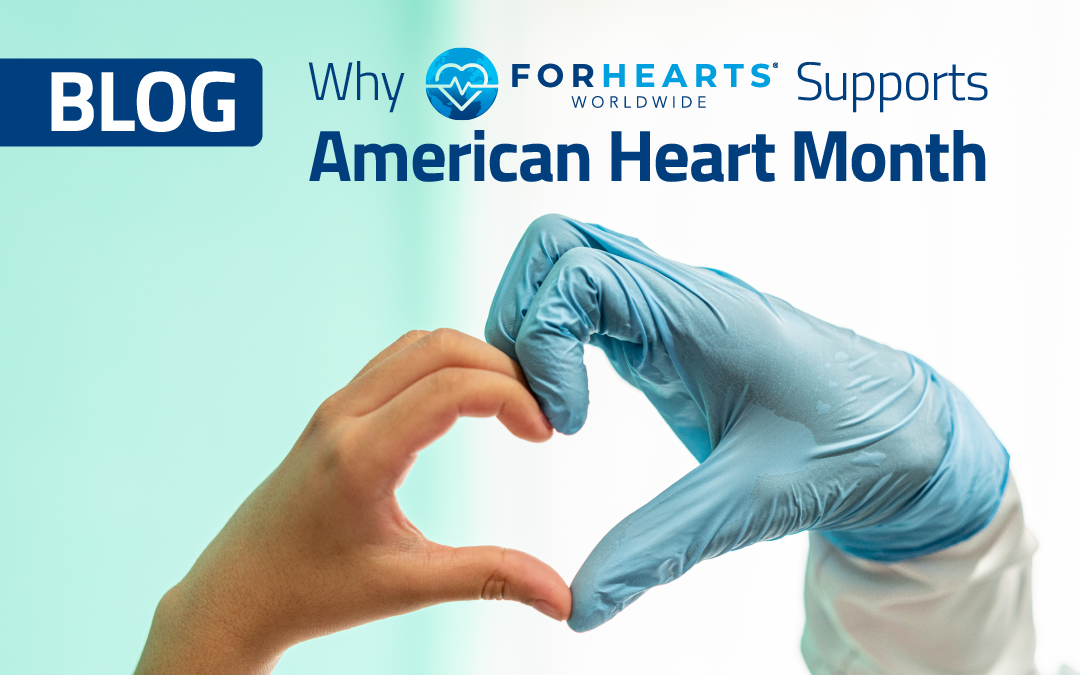February is American Heart Month, recognized annually since 1964, this observance aims to raise awareness of heart health and the prevention of cardiovascular disease, which continues to be the leading cause of death in the United States.
Throughout February, major health agencies and nonprofits in the U.S., including the Centers for Disease Control and Prevention, the National Heart, Lung and Blood Institute (NHLBI), and the American Heart Association, will be raising awareness through informational campaigns and community events to educate Americans on the facts of cardiovascular health in order to prevent heart disease.
One of the biggest awareness events of the month was Wear Red Day on February 3. Sponsored by the American Heart Association’s Go Red for Women initiative, this “icon day of American Heart Month,” puts special emphasis on women’s heart health. Just as it is for all Americans, cardiovascular disease is the leading killer of women, responsible for one in three deaths each year.
Women often experience different signs and symptoms of heart disease, heart attack, and stroke than men. While the combination of chest pain, upper back pain, and shortness of breath are all tell-tale signs of a heart attack, women may also experience other, less obvious “warning signs,” according to Go Red for Women. These include upper abdomen pain, indigestion, nausea, fainting, and extreme fatigue. Healthy women may downplay these symptoms as a stomach bug or something they ate, not realizing they could be early symptoms of a heart attack. Knowing the signs can save lives!
Take a Step for Heart Health
American Heart Month aims to motivate all Americans to learn the warning signs of a cardiac event and adopt healthy lifestyles to prevent heart disease. Setting heart healthy goals is something we can all do—and getting more steps in throughout the day can be the first step to attaining a healthy heart.
Unfortunately, Americans are taking fewer steps than ever as more of us work in sedentary jobs, sitting behind a desk for most of our day. A sedentary lifestyle can double your risk of developing cardiovascular diseases, diabetes, and obesity, according to the World Health Organization.
Being physically active is one of the best ways to help prevent heart disease. The American Heart Association recommends getting in “at least 150 minutes (two and a half hours) of moderate-intensity aerobic activity or 75 minutes of vigorous activity each week.”
If you’re not ready for “vigorous activity,” you can start moving more by simply breaking up your hours of sitting with intervals of movement—think 10 minutes of standing/walking for every 20 minutes of sitting. Just stand up and get moving!
Eat Your Way to Heart Health
A sedentary lifestyle combined with a poor diet can be a “double whammy” that leads to heart disease. So how do you go from an unhealthy diet to a heart-healthy one? A major improvement can start with choosing a diet that can help reduce your risk of high blood pressure.
Called “the silent killer” because it often comes with no physical symptoms, high blood pressure, or hypertension, can damage your arteries by making them less elastic, which decreases the flow of blood and oxygen to your heart. This is why hypertension is one of the primary risk factors for developing cardiovascular disease.
Standing for “Dietary Approaches to Stop Hypertension,” the DASH diet emphasizes vegetables, fruits, whole grains, fish, poultry, beans, nuts and vegetable oils, with fat-free or low-fat dairy products. In turn, you limit your intake of foods high in saturated fat, added sugars, and sodium, which can raise blood pressure.
Just as important as what you do and do not eat is how much you eat. Americans are not only doing a lot more sitting; we’re also doing a lot more eating.
But you can control the amount of food you’re eating by using smaller or divided plates to serve your meal, requesting a to-go box and dividing your restaurant order as soon as it arrives, and being smarter about which foods you’re eating in larger portions. Make servings of nutrient-rich fruits, vegetables, and grains the biggest portions on your plate, with a smaller portion of meat.
By following a heart-healthy diet and getting regular physical activity, along with avoiding the use of tobacco products, at least 80% of premature deaths from heart disease and stroke could be avoided, according to the NCD Alliance.
A Month Made ForHearts
At ForHearts, we live out American Heart Month every month, on a global scale. While cardiovascular disease is the leading cause of death in the U.S. it’s a disease that has a global toll.
Nearly one-third of all deaths worldwide are due to cardiovascular conditions and diseases—that’s nearly 18.6 million deaths, with more than 75% of them occurring in low and middle-income countries, according to the World Heart Federation.
Better access to basic healthcare, vital treatments and therapies can improve global heart health. The work we’re doing to provide live-saving pacemaker procedures to those with heart conditions around the world plays a part in this improvement.
American Heart Month is the perfect time to start taking care of your heart—and the hearts of others. Through your donation, you’ll be part of the mission to provide live-saving cardiac care ForHearts in need.
Make your donation to ForHearts Worldwide in honor of American Heart Month.

